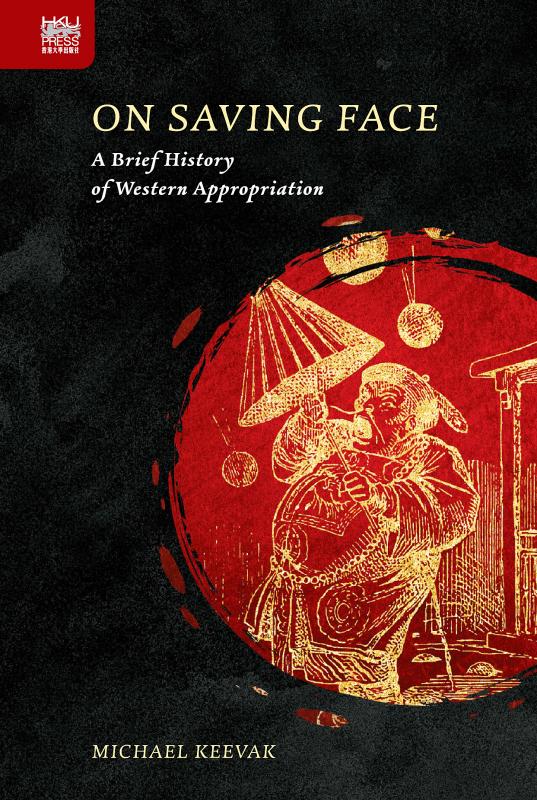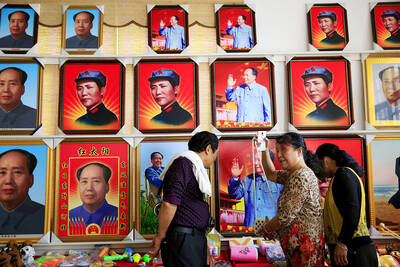Michael Keevak is a US academic who has spent most of his working life at National Taiwan University. He has published several books, all concise and to the point. They rarely contain any Chinese characters (this new one is an exception). One book was on how the idea of being “yellow,” referring to East Asian people, came into existence. Now he looks at the concept, allegedly Chinese, of “saving face.”
I once wrote to 13 literary academics asking for help on what the poet W.B. Yeats meant by “the gong-tormented sea” in his poem Byzantium. Twelve replied, but only one reply was really useful, while not entirely answering the question. This answer was from Michael Keevak, who referred me to an article from the 1940s by someone who had had access to Yeats’ library after his death and noted passages he had marked in pencil in the margin. Several featured gongs in modern Istambul. I had, I have to admit, expected a China connection.
The earliest instance of “saving face” in English Keevak says he could find is from 1839, when a letter-writer to a newspaper in China suggested the British surrender a small amount of opium to the Chinese authorities in the person of a Viceroy sent by the Emperor to suppress the trade. As a result, the Viceroy might be able to “save his face.”

But the person who did most to popularize the term was one Arthur Smith, an American missionary and later a popular writer. “Losing face” and “saving face” became buzzwords in the late 19th century.
The original meaning was to avoid humiliation, but, Keevak argues, the Westerners turned it into a means of humiliating the Chinese, saying that “saving face” was a means of deception.
POPULARIZING A TERM
This was important in Confucian culture because one’s status depended on how others saw you. No, the Westerners said. It’s just a cover for Chinese duplicity in business dealings. Corruption was hidden behind politeness.
“Face” had been appropriated by the Westerners who made it into a despicable aspect of Chinese culture. This, in a nutshell, is Keevak’s theme.
This isn’t the end of the story, however. If the Chinese were able to employ devious trade practices under the cover of “saving face,” then the British and other foreigners were entitled to exercise their God-given right to tell what they presented as the truth, and stick to it come hell or high-water.
This continued into the period when British and French forces assisted China in putting down the Taiping Rebellion (1850 to 1864). Despite working together, the foreigners remained convinced that the Chinese were always trying to conceal something. Chinese “face” was ultimately a false face, in other words.
Keevak then looks at “face” in the centuries before the 19th, concluding that Chinese culture had become, in part, “little more than an appearance, and so ‘saving face’ was necessarily a deception as well.”
“Handsome face,” Keevak notes, meant bribery.
The distinctions Keevak makes between various usages of “face,” Chinese, Western and even Japanese, can get complicated, but the reader needs to persevere.
After a consideration of what missionaries in China in the 18th century and earlier might have thought of “face,” then “face” in the realm of international politics and diplomacy, Keevak writes two concluding chapters, Chinese “Face” Revisited and Sociological “Face”.
The former puts together various anecdotes involving “face,” such as a joke about a man being pursued by his tailor for payment who tells the tailor that if he loses face with the girl he is in love with they’ll both be out of pocket as she is very rich. He then adds some anecdotes from the post-1911 era about officials of the new Republican government trying to “save face” following their misdeeds.
The essay “On Face” by Lu Xun (魯迅) also comes up, as do the same author’s “face” references in his novella The True Story of Ah Q.
Books with titles like What’s Wrong with China and Is China Mad?, both published in 1926, are referred to, with Keevak noting that the former is a statement not a question.
‘FACE’ TODAY
In Sociological “Face” Keevak follows the increasing popularity of “face” words among writers generally, not necessarily Sinologists. He asks, incidentally, why “shamefaced” is rarely included in the variants. The phrase “saving face” has, not surprisingly, re-surfaced in modern anti-China discourse, most notably in America.
This, then, is an extremely thorough book. It concentrates without digression on its subject, and must rank as the most impressive — and likely to be the most influential — of Keevak’s output (six books, including this one, so far).
So what conclusion should we come to? My feeling is that saving face is a universal phenomenon. You see it in politicians all the time, and I see myself employing the tactic on a regular basis. It’s no more a Chinese habit that any other, simply that Chinese perceptiveness has seen to it that it was they who identified it first, if not as specifically as the Westerners would have us believe. We employ devices to shore up our own self-esteem as well as to impress others.
Saving face is arguably a characteristic of human beings. It’s not so with animals, it would seem. One can’t imagine a dog or a lion saving face, whatever the innumerable images of them on Facebook might seek to imply. But people do it all the time, and probably in every corner of the globe. I am what I seek to imply I am because there’s nothing else to take its place. So the 19th century conflict between the Chinese and the foreigner ex-pats was merely a sideshow in what is in reality a universal phenomenon. But trust Michael Keevak to have identified an intriguing historical moment.

Many people noticed the flood of pro-China propaganda across a number of venues in recent weeks that looks like a coordinated assault on US Taiwan policy. It does look like an effort intended to influence the US before the meeting between US President Donald Trump and Chinese dictator Xi Jinping (習近平) over the weekend. Jennifer Kavanagh’s piece in the New York Times in September appears to be the opening strike of the current campaign. She followed up last week in the Lowy Interpreter, blaming the US for causing the PRC to escalate in the Philippines and Taiwan, saying that as

Taiwan can often feel woefully behind on global trends, from fashion to food, and influences can sometimes feel like the last on the metaphorical bandwagon. In the West, suddenly every burger is being smashed and honey has become “hot” and we’re all drinking orange wine. But it took a good while for a smash burger in Taipei to come across my radar. For the uninitiated, a smash burger is, well, a normal burger patty but smashed flat. Originally, I didn’t understand. Surely the best part of a burger is the thick patty with all the juiciness of the beef, the

This year’s Miss Universe in Thailand has been marred by ugly drama, with allegations of an insult to a beauty queen’s intellect, a walkout by pageant contestants and a tearful tantrum by the host. More than 120 women from across the world have gathered in Thailand, vying to be crowned Miss Universe in a contest considered one of the “big four” of global beauty pageants. But the runup has been dominated by the off-stage antics of the coiffed contestants and their Thai hosts, escalating into a feminist firestorm drawing the attention of Mexico’s president. On Tuesday, Mexican delegate Fatima Bosch staged a

The ultimate goal of the Chinese Communist Party (CCP) is the total and overwhelming domination of everything within the sphere of what it considers China and deems as theirs. All decision-making by the CCP must be understood through that lens. Any decision made is to entrench — or ideally expand that power. They are fiercely hostile to anything that weakens or compromises their control of “China.” By design, they will stop at nothing to ensure that there is no distinction between the CCP and the Chinese nation, people, culture, civilization, religion, economy, property, military or government — they are all subsidiary